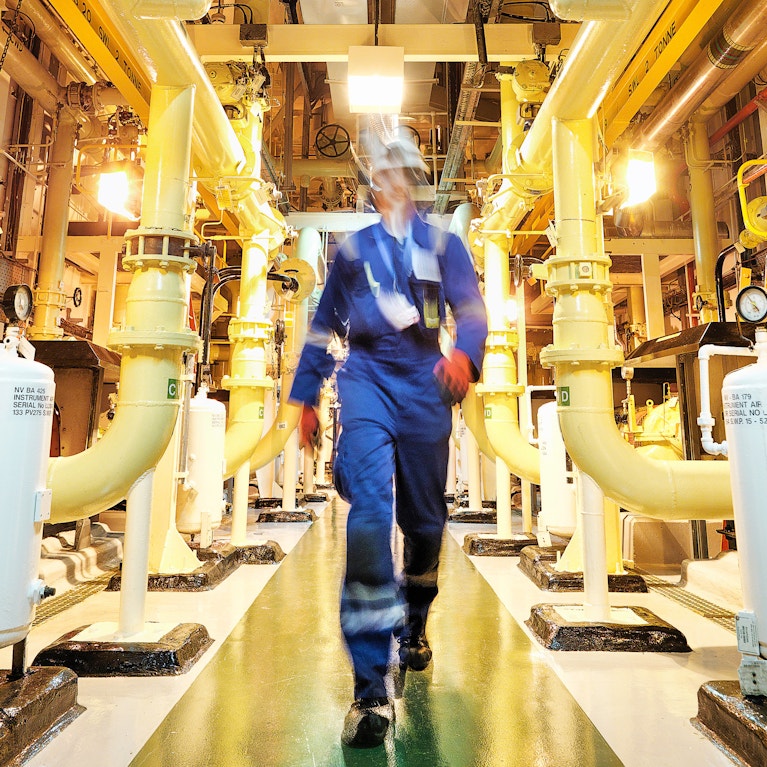
Sellafield
Harnessing AI to reduce administrative burden by 90 percent
Tags
Sellafield, the birthplace of the UK’s nuclear industry, ceased producing nuclear power in 2003. Yet the site continues to play an important role as the storage centre for the country’s nuclear waste. At the same time, the nuclear production facilities are still being dismantled; a lengthy process for any former nuclear power plant where ensuring safety is paramount.
PA’s expertise in data science and regulation and their hands-on experience and skills have fundamentally changed how we work. This is a great example of AI and human expertise coming together to resolve a complex challenge, in this case, making our industry safer.”
To operate safely, the teams on site rely on scores of processes set out in complex documents. Every time legislation or regulations change, these documents and processes may have to change to stay compliant and pass inspections. Until our collaboration with Sellafield, the process of checking for these changes and working out what they mean for Sellafield remains highly manual and can take weeks per document. Sellafield saw an opportunity here to be industry leaders by being truly innovative and adopting AI to radically accelerate and enhance their existing specialised processes.
Together with Sellafield, we developed an AI application that checks for changes in legislation or regulation. The app is designed to highlight the most relevant changes and help engineers see the possible implications for their own documents and related processes. What used to take weeks now takes minutes. And because engineers now have to read only a small fraction of the text they did before, they can spend more time on keeping the site running as efficiently and safely as possible.
Key successes
- Cut the time it takes to find, and act on, changes to laws and regulations by removing 90 per cent of legal and regulatory text read within documents.
- Minimised administrative burden and repetitive detective work so now the team can document their work more clearly and make knowledge transfer between engineers even easier
- Combined artificial intelligence with human ingenuity to create models that automatically detected legislative changes that when implemented, would increase safety.
Sellafield was the UK’s first nuclear site, with construction starting on the then-named Windscale nuclear plants in 1947. It now processes waste from the UK’s nuclear power stations, and in parallel, many of its 11,000-plus staff are involved in decommissioning old parts of the site.
This is a highly manual and specialised process that hasn’t changed for decades. Checking for these changes and working out the implications can take up to two weeks per document changed. Teams of engineers hold workshops to decide what the changes mean for their own documents. Others then update the documents, which in turn need regulatory approval, which can take months.”
To operate safely, it relies on processes set out in documents that comply with the demands of the industry regulator, the Office of Nuclear Regulation. Ultimately, Sellafield’s licence to operate depends on keeping up with these changes. But its engineers have to check for them, and work out if they’re relevant to Sellafield’s own operations. If they are, engineers must decide what needs to change in their own documents and associated processes.
Sellafield had started to use artificial intelligence (AI), so far confining it to robotics for inspections in hazardous areas.
We were eager to explore the possibilities of analytics. We saw that PA had the practical experience we needed, as well as the expertise to advise us on how data could help us modernise how we operate. They are helping us to re-define industry norms.”
Automating detective work
A proof of concept showed that natural language processing could transform the ways of working by spotting differences between versions of the same document. The algorithm our team built found 3,000 changes over 20 documents.
We now had a way of automatically extracting what’s new from each revision and structuring the data in a way that engineers could review and track easily.”
Next, our team developed a way to automate checking for legislative changes, so engineers could get near-real time updates when new legislation would be uploaded. Our experts combined machine learning and natural language processing to see which changes were relevant by building two models. The first model works out if something is relevant to Sellafield’s decommissioning team and the second works out which of Sellafield’s documents the relevant changes potentially impact. As time goes on, Sellafield can build up a structured database of changes which can inform future changes, as well as review historical data.
PA have quickly showed how analytics and innovation can make a telling difference in our highly complex and specialised field. And they’ve done it in a collaborative and highly practical way.”
Input from Sellafield’s engineers was vital. AI needed human experts to find the changes, identify if they were applicable and link them to relevant documents. By working closely with the engineers, we tuned the model to minimise false negatives and the chances of missing a link. It was critical to understand the thought process engineers use to read documents so the model could be taught to replicate it. The tool can generate a probability score for each change which helps prioritise where to look first.
Ingenuity timeline
Phase 1
We conducted an exploratory data analysis to map pain points across processes and spot the data science opportunities to remove these challenges.
Phase 2
Our analytics experts created a proof of concept to demonstrate the potential of AI to spot differences between two versions of the same document, as well as an app that could become a decision support tool for engineers in the future.
Phase 3
Our team and Sellafield’s engineers developed an AI algorithm that automatically pulls legislative data, and predicts its relevancy and impact on Sellafield’s documents, packaged in a user-friendly way.
Spending time on what matters the most
The Sellafield team now has a cloud-based application, hosted on Microsoft Azure, that lets them devote their effort to what matters most. It uses interactive visualisations like Sankey diagrams to map connections between legislative or regulatory text and Sellafield documents. And that means engineers know far sooner where their priorities lie and can plan their work better.
We now have what we call a golden thread from the legislation and regulation at a high level to the fine detail of our own documents. We can audit and track changes over time, which helps us develop our new engineers and pass knowledge on to them. It also helps us make decisions more quickly, because data is easier to access.”
The team can also document their work more clearly, which avoids having to rely too much on the knowledge of individual engineers and makes knowledge transfer even easier.
Our estimates show that, based on the rate of changes to legislation and regulation in the last five years, the new system can make them 20 per cent more efficient.
Explore more





